Ever wondered if your cat would love a furry companion—or if doubling the whiskers means doubling the trouble? The question, should I get a second cat? , isn’t as simple as it appears. While the thought of adopting a second cat and expanding your cat household is exciting, it also comes with unique challenges and responsibilities. This guide breaks down every step you need to consider, from understanding cat behavior and your existing cat’s needs to the practicalities of introducing a second cat. Whether you’re seeking a feline friend for your current pet or fulfilling your own dreams of a multi-cat home, we’ll help you make an informed, heartfelt decision.
Contemplating Should I Get a Second Cat? Unpacking the Decision

- Are you ready for the responsibilities of adopting a second cat?
- Why the decision to grow your cat household is more complex than it seems
- How assessing your resident cat’s needs improves outcomes
Thinking, “ Should I get a second cat? ” is just the tip of the iceberg. Most pet owners are initially charmed by the idea of a bustling cat household, but it’s essential to look beyond the surface. Adopting a second cat means more than providing a new playmate or bringing twice the cuddles; it alters your home’s social dynamics and daily routines. Understanding your existing cat’s behavior and disposition is crucial —are they comfortable with change, or do they enjoy their peaceful territory alone? Remember, adding a feline friend into the mix can bring joy, but may also introduce challenges like territory disputes, requiring careful management and lots of patience.
Besides the emotional side, practical considerations—like space, time, budget, and the willingness of all family members—play a significant role. Before adopting a second cat, weigh if you’re prepared for additional vet visits, litter box duties, and double the amount of daily care. Assessing both your and your cat’s readiness can prevent setbacks and lead to a harmonious cat household for all involved.
What Truly Motivates Wanting a Second Cat? (Should I Get a Second Cat?)
Popular Reasons People Consider a Second Feline Friend
- Alleviating loneliness for your existing cat
- Fulfilling your own desire for another companion
- Planning for long-term cat companionship
"While companionship is a legitimate reason, always prioritize your cats' behavioral compatibility over your personal wishes." – Feline Behaviorist, Dr. Samantha Lin
Many people ask, “ Should I get a second cat? ” because they notice their current cat seems bored, lonely, or less playful. Often, pet owners want their resident cat to have more social interaction and mental stimulation, especially if the home is empty during the day. Some simply crave the additional joy and comfort another feline friend brings. However, the real question isn’t about your desire, but why you’re considering a second cat—and whether this decision truly benefits your existing cat.
It’s important to reflect on your underlying motivations, such as wanting to rescue more animals or feeling the need for increased companionship yourself. Sometimes, a “good idea” for a pet owner may become a long-term stressor if it isn’t right for the cats. Prioritizing compatibility—both feline and human—sets the foundation for a happy, lasting multi-cat home.
Will Should I Get a Second Cat Benefit Your Resident Cat?
Cat Behavior: Recognizing Social Needs and Boundaries

- Identifying if your existing cat is a solitary or social feline
- Key cat behavior signals: is your resident cat open to sharing space?
Understanding cat behavior is vital before introducing a second cat. Not all cats are equally social; some thrive as solo pets, while others enjoy the company of other cats. Cats are naturally territorial, and your resident cat’s reaction to new animals often depends on their prior socialization and their current position within your household. Watch for clues: Does your existing cat play gently with visiting cats or act withdrawn? Has your cat previously lived harmoniously with siblings or other animals? If your cat often seeks attention, shares space willingly, and recovers quickly from disruptions, they may welcome a companion. On the other hand, a cat that is easily startled, defensive, or fiercely guards territory may prefer being an only pet—adopting a second cat under these circumstances can lead to ongoing stress for both cats and owners.
Before making any moves, assess your resident cat’s openness to change. Pay attention to subtle cues like excessive hiding, avoidance, or increased aggression when exposed to other animals or changes in their environment. Respecting an adult cat’s established routines and comfort zone is key to setting everyone up for success.
Fact Sheet Table: Solitary Cat vs. Social Cat Behaviors
| Behavior | Solitary Cat | Social Cat |
|---|---|---|
| Plays Alone | Frequently | Occasionally |
| Seeks Attention | Low | High |
| Aggression | May occur with new cats | Rarely, usually playful |
| Grooming Others | Seldom | Often |
Is Adopting a Second Cat a Good Idea for You and Your Cat Household?

Assessing Your Living Situation and Cat Household Dynamics
- Space requirements for two cats
- Family members’ roles in multi-cat care
- Existing routines and potential adjustments
Even if adopting a second cat seems like a good idea on paper, it’s vital to realistically evaluate your household’s suitability. Two cats require more space than one. Multiple litter boxes, separate feeding zones, and enough quiet corners for alone time are all necessary. Ask yourself: Do you have enough space to accommodate these needs? Will every family member participate in the increased care—a lot of work that includes feeding, grooming, playtime, cleaning more litter boxes , and scheduling vet visits? These are crucial aspects of maintaining harmony within your cat household.
Review your daily routines: Can you provide adequate play and attention for both cats? Are your existing cat’s needs already met, or will an extra pet stretch your resources thin? Making changes to routines, like staggered feeding or separate sleeping areas, may be required. Considering these elements early can help you avoid creating stress for yourself and your pets.
Cost Considerations: Can Your Budget Support Adopting a Second Cat?
| Expense | One Cat (Monthly) | Two Cats (Monthly) |
|---|---|---|
| Food & Treats | $30 | $60 |
| Litter | $15 | $30 |
| Medical Care | $25 | $50 |
| Pet Insurance | $20 | $40 |
| Toys & Enrichment | $10 | $20 |
| Total | $100 | $200 |
Doubling the cats means doubling the costs. Beyond one-time adoption fees and initial supplies, recurring costs like food, litter , medical care, and toys can add up quickly. Factoring in pet insurance is smart, but emergencies and chronic illnesses may still exceed your budget. Before adopting a second cat, make sure you can comfortably afford all ongoing expenses to ensure every feline friend gets the care and enrichment they deserve in your cat household.
How to Choose the Right Second Cat: Age, Gender, and Personality Factors
Introducing a Second Cat: What to Know about Adult Cat vs. Kitten
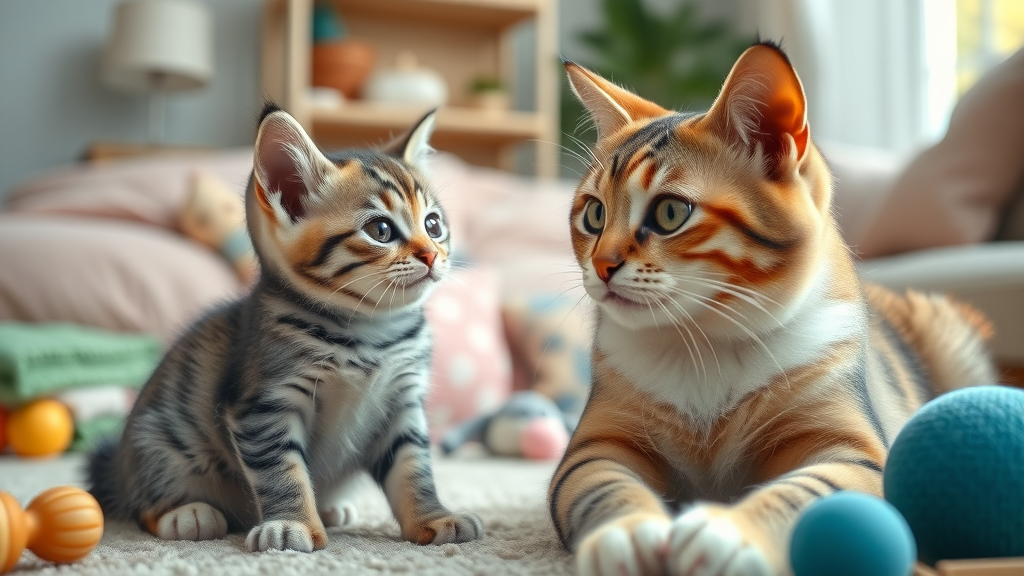
- Pros and cons of adopting an adult cat
- Kitten integration challenges in an existing cat household
When introducing a second cat , consider the age of your new feline friend. Adopting an adult cat can be an excellent choice if your household or resident cat values calm routines—adult cats typically adapt more quickly to new environments and have established personalities that you can match to your existing cat. However, some adult cats—especially if previously feral or poorly socialized—may take longer to adjust or be territorial. By contrast, kittens bring high energy and play, which isn’t always a good idea if your resident cat is senior, shy, or set in their ways. Kittens require round-the-clock care, social training, and gradual introductions to avoid overwhelming your current pet.
Think about your existing cat’s age and temperament. Senior cats may find kitten antics draining, while two playful cats might bond over shared games. Always consider how much time, effort, and patience you can dedicate to different ages for the smoothest integration possible.
Should I Get a Male Cat or Female Cat as a Second Cat?
- Insights on male cats vs. female cats’ compatibility
- Managing personality clashes between female cats
"Matching personality is more essential than matching gender when adding to your cat household." – Pet Adoption Counselor, Jamie Wynn
Many pet owners wonder if male cats or female cats make better secondary companions. There’s no hard-and-fast rule—relationships between male cats, female cats, or mixed pairs all depend on individual personality. While common wisdom suggests male cats are more laid-back and female cats may be territorial, countless exceptions exist. Unrelated cats of any gender can get along, provided their temperaments and activity levels are compatible. Still, female cats are sometimes less tolerant of other females, particularly in established households, so a gradual introduction is key. Ultimately, it’s less about gender and more about the unique personalities, previous social interactions, and social group chemistry of your prospective pets.
If you’re unsure, consult adoption counselors or feline behavior specialists to help match your existing cat with a companion whose energy, sociability, and habits align with your own cat’s preferences.
Preparing Your Cat Household: Practical Steps Before Bringing Home a Second Cat
Setting Up Essential Resources – Litter Box, Food Bowls, and Safe Zones
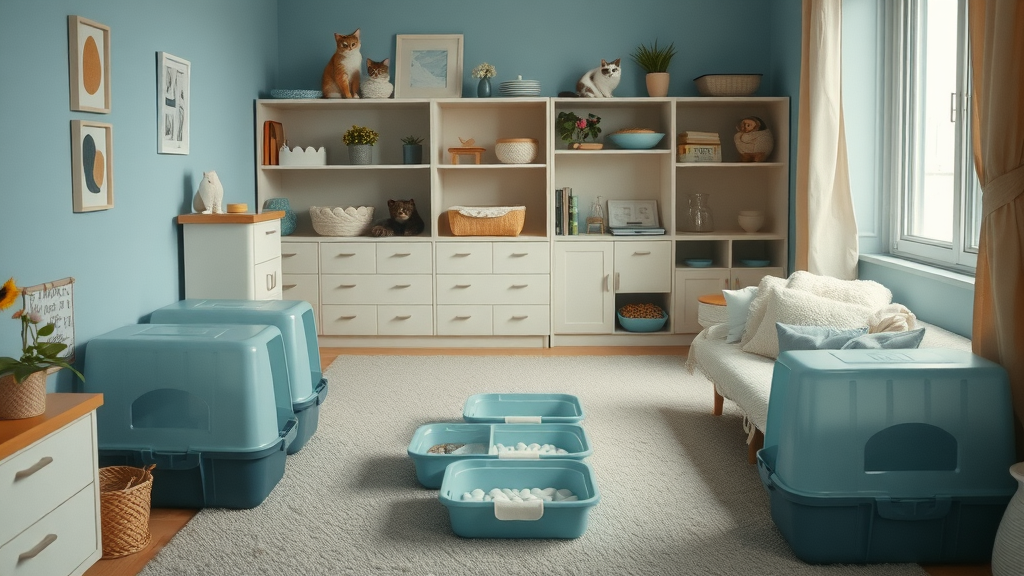
- Litter box rule: one per cat plus one extra
- Double up on feeding stations and comfy resting spots
Setting up your home before adopting a second cat is crucial to avoiding future conflicts. Start by following the golden rule of litter boxes : provide one per cat plus one extra. This means two cats require at least three litter trays , placed in quiet, accessible locations. Separate food and water bowls help prevent resource guarding—a common source of stress. Schedule cozy sleeping zones, high perches, and hiding spots so both cats can retreat for alone time as needed. The more thoughtfully you organize your space, the easier the transition for everyone in your cat household.
Arrange toys and scratching posts in multiple areas to offer both shared playtime and private relaxation. Creating parallel resources makes it less likely any cat will feel displaced, allowing both your resident cat and new arrival to explore and settle in peacefully.
Resident Cat’s Territory: How to Reduce Stress and Prevent Aggression
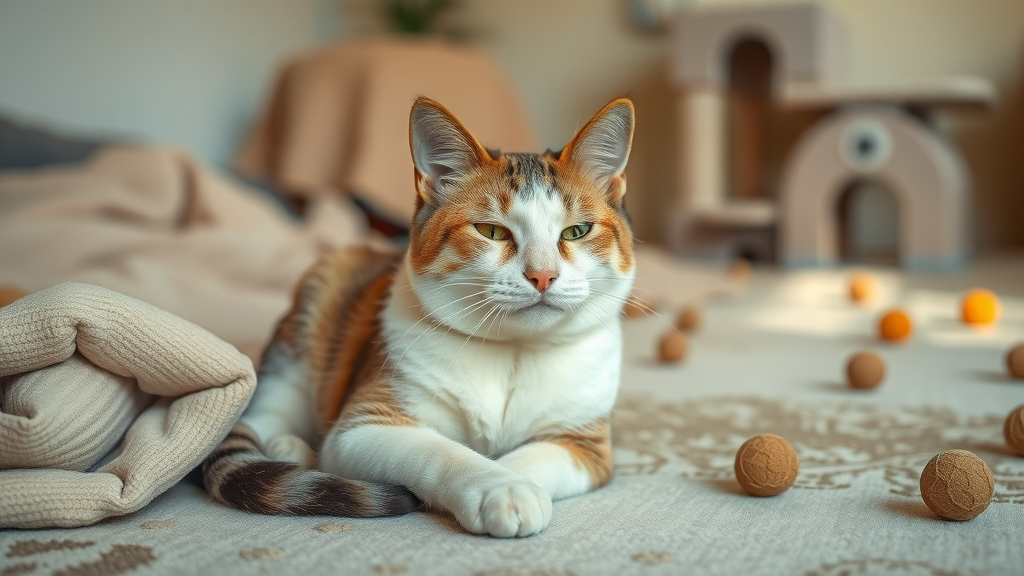
- Gradual territory introduction plans
- Importance of smell exchanges and sensory preparation
Your resident cat needs to feel secure as you introduce a second cat. Start with a gradual introduction: keep your new cat in a separate room at first, allowing both to get used to each other’s scents through closed doors, bedding swaps, or gentle grooming tools. This sensory preparation helps both cats become familiar with each other before any direct meetings, reducing the likelihood of aggression or territory marking. Patience is essential—forcing early interactions can backfire, causing stress or long-term resentment.
Use pheromone diffusers or calming sprays to soothe nerves and monitor both cats’ behavior closely. Look for progress like shared curiosity, relaxed body language, and diminishing signs of fear or aggression. Celebrate small victories—whether it’s ignoring one another through a door or calmly sniffing a freshly swapped blanket. Remember, smooth transitions require time and respect for feline boundaries.
Best Practices for Introducing a Second Cat (Should I Get a Second Cat?)
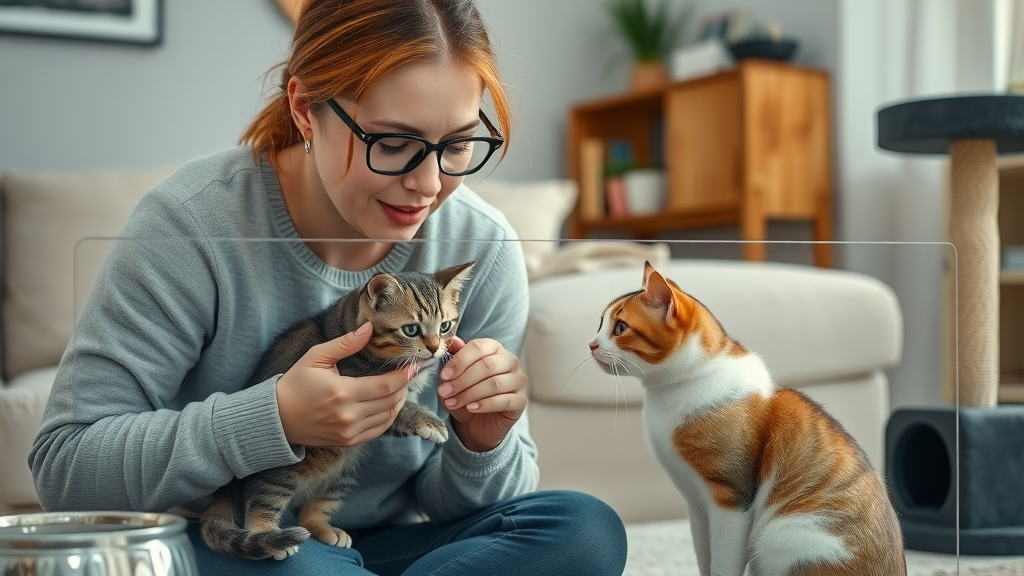
Step-by-Step Introduction Process
- First days: separation and scent swaps
- Supervised meetings: body language cues
- Building positive associations with treats and play
"Go slower than you think you need to—patience pays off with feline relationships." – Certified Cat Trainer, Elena Park
Day 1-3: Keep your new cat in a safe, closed room with all essentials. Feed treats on opposite sides of the door to create positive associations. Swap bedding and toys between spaces to introduce new scents safely.
Day 4-7: If both cats are relaxed, begin visual introductions using a baby gate or cracked door—observe body language cues like ears, tails, and posture. Short, controlled meetings under supervision help reinforce trust.
Ongoing: Gradually increase together time, always ending sessions on a positive note with treats, calm play, and praise. Each cat will progress at their own pace, so be prepared to slow down if tension surfaces. Consistency and praise make for smoother cat introductions and long-term harmony in your cat household.
Common Challenges and Cat Behavior Issues to Watch For
- Aggression, hiding, or territory marking
- Adjusting your approach for introverted adult cats
Even well-prepared introductions can hit bumps. Watch for warning signs like growling, hissing, swatting, or either cat hiding for prolonged periods. These are normal adjustments but require attention. Never punish either cat for negative reactions—instead, increase distance and try again later, moving at the pace of the more timid feline friend. For shy adult cats or those with traumatic histories, longer separation and gradual interaction may be necessary. The ultimate goal is to prevent aggression and allow both cats to establish trust and routines within your home.
If issues persist for several weeks, consult a feline behaviorist for tailored strategies. With time, most unrelated cats learn to tolerate or even enjoy one another—if introductions are managed with patience and empathy.
Watch: Signs Your Cat Is Ready for a Companion & How to Respond
This compelling explainer covers what cat behavior signals your feline friend may (or may not) be ready for companionship. See real-life examples of cat body language, solitary vs. social group cats, and studies on when adding a feline friend is a good idea for your household.
Watch: Owners Share the Dos & Don’ts That Made Their Multi-Cat Household Harmony Possible
Enjoy firsthand tips from multi-cat pet owners on what worked, what didn’t, and how to troubleshoot tricky transitions when introducing a second cat. Their journeys reveal both the joys and the realities of growing your cat household.
People Also Ask: Are Cats Happier With a Second Cat?
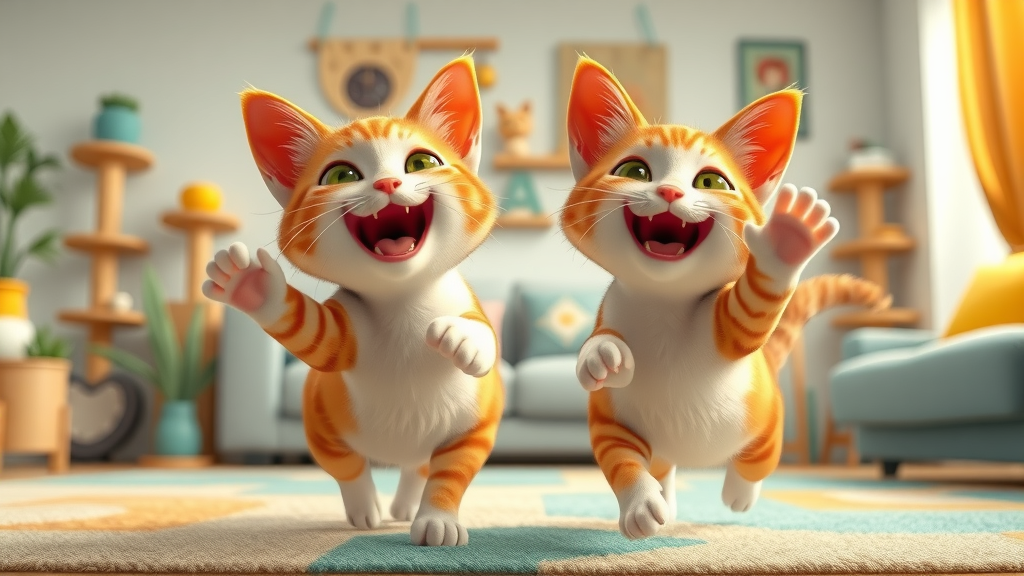
Answer
- Some cats thrive with a feline friend and enjoy new companionship, but others may prefer being a solo pet. It all depends on your existing cat’s temperament and past social experiences.
Cats are complex—while some enjoy the company of other cats, others cherish their territory and alone time. Evaluate your own cat’s preferences before deciding if bringing another feline into your home is the right move.
People Also Ask: What Are the Downsides of Getting Two Cats?
Answer
- Potential downsides include more complex cat behavior issues such as territorial disputes, added financial cost, time commitment, and possible incompatibility that can cause long-term stress for both cats and owners.
While a multi-cat household can bring double the joy, it also means more litter boxes to clean, higher vet bills, and extra time spent mediating conflicts. Think carefully about your ability to handle these challenges before moving forward.
People Also Ask: What is the 3 3 3 Rule for Cats?
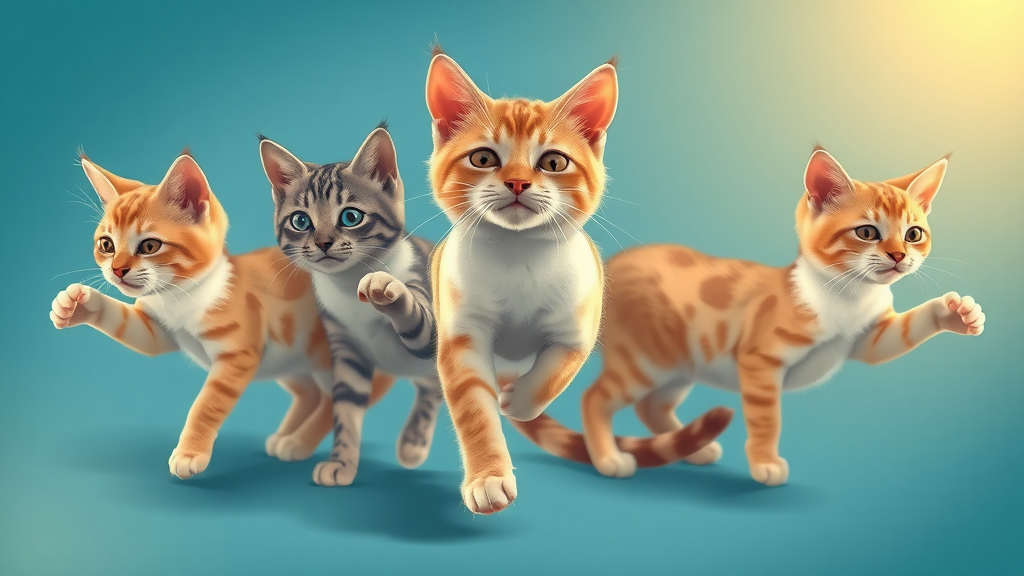
Answer
- The 3 3 3 rule describes common cat adjustment periods: 3 days to decompress, 3 weeks to learn routines, and 3 months to fully feel at home. Introducing a second cat should respect these phases.
Allow both your resident and new cat time to settle—the process is gradual, and each cat will acclimate at their own pace. Patience is crucial to building a peaceful, bonded cat household.
People Also Ask: Is It Better to Have a Single Cat or Two?
Answer
- Both single and dual cat households can be successful. The best choice depends on your cat’s temperament, your lifestyle, and your ability to meet the needs of multiple pets.
There’s no universal answer—monitor your current cat’s happiness, reflect on your routines, and make a choice that keeps everyone in your home, furry or not, content.
Top Dos and Don’ts for Adopting a Second Cat

- Do assess your resident cat’s readiness
- Do prepare the space in advance
- Don’t rush introductions
- Don’t ignore changes in cat behavior
Stick to best practices to avoid unnecessary conflict and nurture healthy relationships. Being prepared and attentive will set the stage for a successful transition and a harmonious cat household.
Expert Insights: FAQs on Should I Get a Second Cat?

- How do I know if my existing cat is ready?
- What if my cats never get along?
- Are some breeds better suited to multi-cat life?
Signs your existing cat is ready include playful curiosity, previous positive experiences with other cats, and a willingness to interact with new animals. If cats never adjust, consider tailored training or rehoming options prioritizing their well-being. Some breeds, such as Ragdolls or Siberians , are known for their sociability, while others, like Persians , often prefer solitude; always research breed traits and consult with adoption counselors for compatibility insights.
Best Resources and Support for New Multi-Cat Owners
- Recommended books and online courses on introducing a second cat
- Where to find feline behavior specialists
- Support communities for cat households
Tap into practical guides and online communities to support the transition to a multi-cat environment. Find a cat behaviorist or join forums and pet owner groups to share experiences, ask for advice, and solve issues quickly, ensuring your cat household flourishes.
Considering All Factors: Is Should I Get a Second Cat the Right Question for Your Cat Household?
Key Takeaways to Guide Your Decision
- Not all cats need or want a second cat—honor their individuality
- Preparation, patience, and understanding cat behavior are essential
- The answer lies in observing your existing cat and your own readiness
Observe your cat, evaluate your resources, and proceed with both empathy and careful planning. The best homes honor the unique needs of each feline friend and their humans.
🐾 Ready to Welcome a Second Cat? Let Us Help You on Your Cat Household Journey
- Love pets as much as we do? Get the best tips, treats, and tail-wagging stories delivered monthly. 👉 Subscribe to our newsletter and never miss a bark or purr! 📧 One email. All the value. Join thousands of pet parents who get our monthly roundup of pet care tips, product reviews, and giveaways.
When considering adding a second cat to your household, it’s essential to assess your current cat’s temperament and your ability to meet the needs of both felines. The article “Should I Get Another Cat? Ask Yourself These 5 Questions First” from Chewy provides valuable insights into evaluating your cat’s personality, the time and space required for another pet, and the financial implications of a multi-cat household. ( chewy.com )
Additionally, the RSPCA Knowledgebase article “Should I get another cat to provide company for my cat?” emphasizes the importance of understanding your existing cat’s preferences and the necessity of gradual introductions to ensure a harmonious environment. ( kb.rspca.org.au )
If you’re serious about expanding your feline family, these resources will provide you with comprehensive guidance to make an informed decision.
 Add Row
Add Row  Add
Add 




Write A Comment